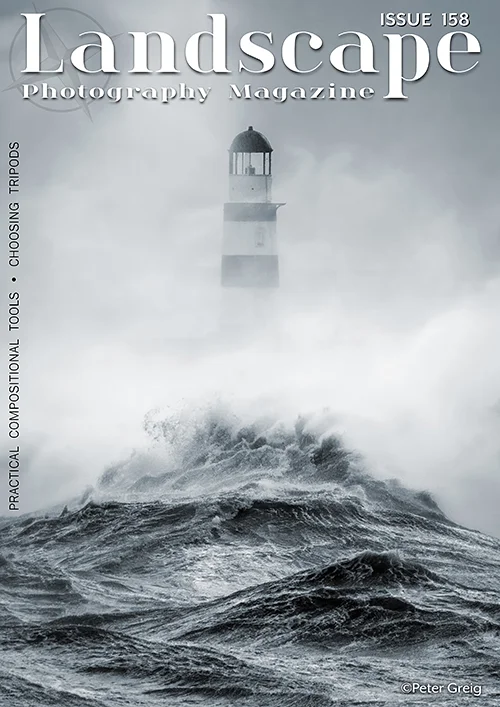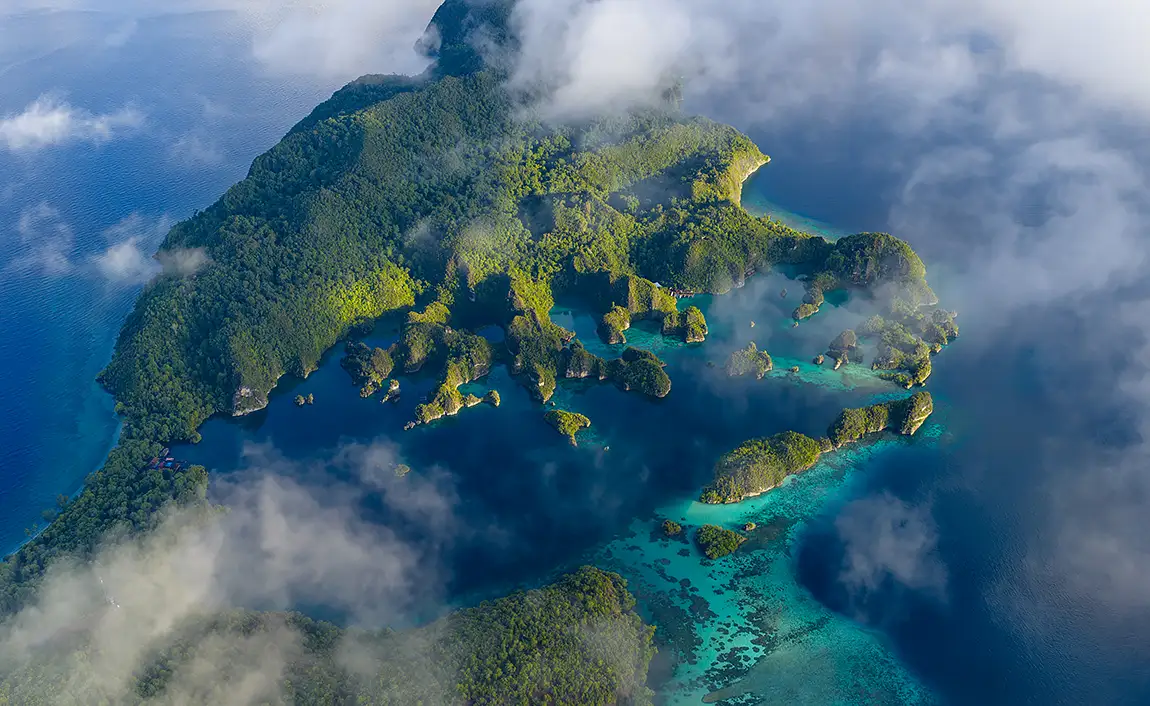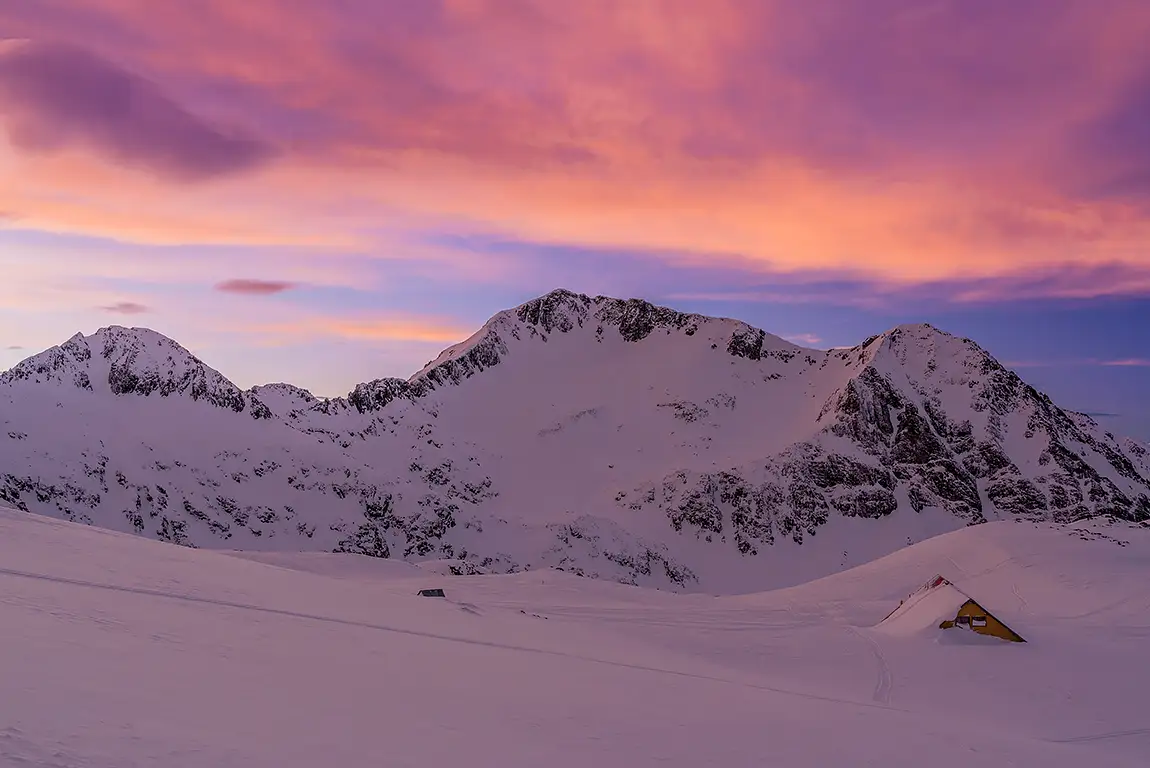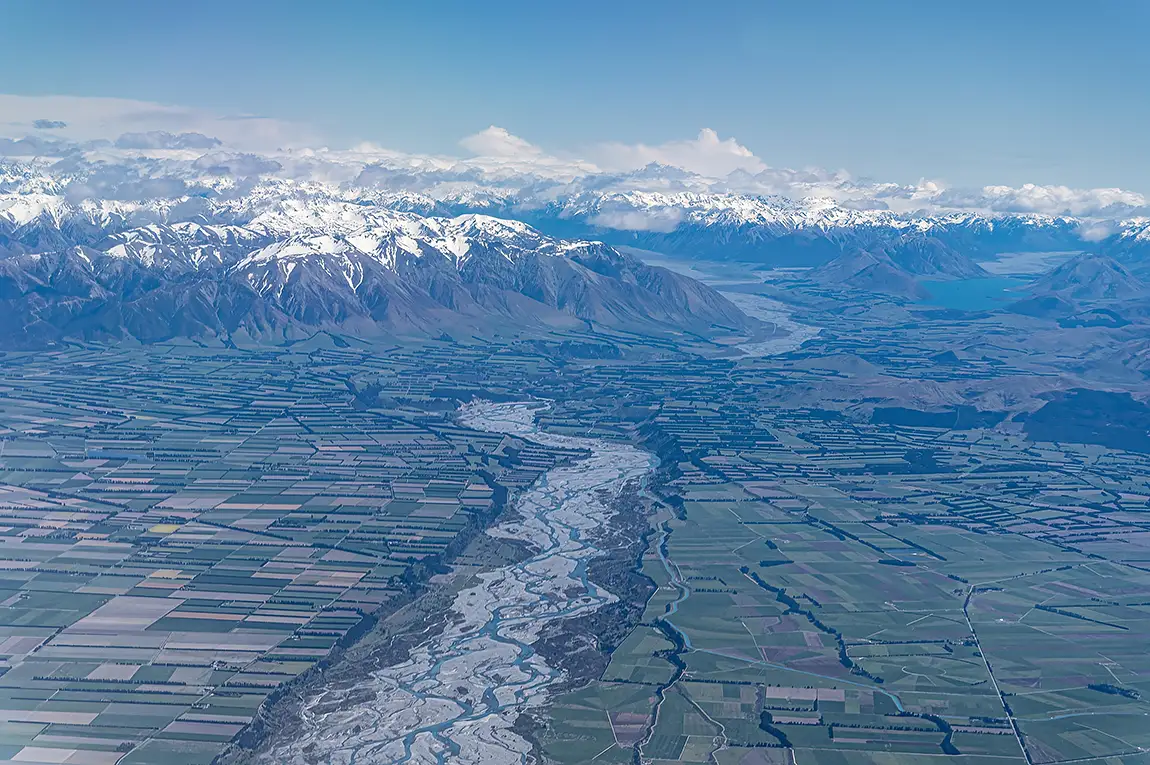A forest wall during a snowstorm is not an obvious landscape photograph. It doesn’t offer a picturesque view or a panorama for examination, nor can one easily identify the compositional techniques used—such as focal points, rule of thirds, or lines guiding the viewer’s eye.
Anyone seeking only the aesthetic dimension of photography might overlook such a scene, dismissing it as a dull and uninteresting snapshot of an unpleasant winter day. However, if you engage with photography on an emotional level, you can begin to construct a different narrative. This black-and-white image resembles a woodcut, portraying a natural forest as a tall, solid wall.
In this photograph, the trees serve as the backdrop, with only a few snow-covered trunks and branches emerging in the foreground to create a composition of chaotic fractals. This vividly showcases the strength of the forest. The original colour palette is limited to grayscale, which enhances the raw and gloomy atmosphere.
There are no leaves, no birds, and no signs of life in this forest; only nature succumbs to a gust of cold. Yet the photograph encapsulates an emotion—a moment that I, as the author, hope viewers can also experience. It captures the feeling of standing alone at the edge of a forest clearing, with a dark, thick veil of snow advancing above you, while the sound of the wind grows louder in your ears.
For me, this moment represented a closeness to nature and a sense of freedom, frozen in time. After all, how many people willingly take a stroll in a snowy blizzard for the joy of it? Paradoxically, I cherish such walks, not just in search of captivating frames but for the soothing connection they offer to the elements—a balm for the human psyche.









